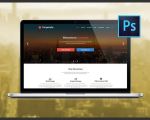- 1-Understanding-AI-in-Website-Design-Copying
- 2-Step-by-Step-Process-to-Copy-Website-Design-with-AI
- 3-Tools-and-Technologies-for-AI-Website-Design-Copying
- 4-Ethical-Considerations-and-Best-Practices
- 5-Real-World-Examples-of-AI-Used-in-Design-Copying
- 6-Where-to-Find-Expert-Resources-SitePoint-24
1. Understanding AI in Website Design Copying: What It Can and Can’t Do
When learning how to copy a website design with AI, it’s essential to grasp what artificial intelligence can realistically achieve. AI tools today are capable of analyzing a website’s layout, color schemes, typography, and user interface elements to generate similar design structures quickly. However, AI doesn’t merely clone websites blindly—it uses pattern recognition and machine learning to recreate designs with flexibility.
This means AI can speed up the replication process significantly, but human oversight remains crucial to tailor the design for unique branding and functionality needs.
2. Step-by-Step Process to Copy Website Design with AI
Copying a website design with AI typically involves several clear stages:
Step 1: Identify the target website and analyze its key design features—layout, color palette, fonts, and interactive elements.
Step 2: Use AI-powered web scraping and design tools to extract HTML/CSS structure and style information.
Step 3: Generate a base design using AI-driven website builders or code generators that mimic the original layout.
Step 4: Customize the replicated design manually to ensure brand uniqueness and responsiveness across devices.
Step 5: Test the new design thoroughly for usability and performance before deployment.
3. Tools and Technologies for AI Website Design Copying
Several advanced AI tools facilitate the website design copying process:
Design AI Platforms: Tools like Wix ADI and Bookmark use AI to create designs inspired by existing websites.
Web Scraping Software: These extract code and assets from websites, which AI can then analyze.
Code Generation AI: Programs such as OpenAI’s Codex help generate frontend code based on design inputs.
Combining these technologies allows for efficient and accurate design replication with room for customization.
4. Ethical Considerations and Best Practices When Copying Website Designs
While AI can copy website designs swiftly, ethical boundaries must be respected. Directly duplicating proprietary designs without permission can lead to legal issues and damage your reputation. Instead, use AI to inspire and accelerate your own creative process rather than plagiarize.
Always aim to add unique elements, improve user experience, and align the design with your brand identity. Transparency with clients or stakeholders about AI’s role in the process helps maintain trust.
5. Real-World Examples of AI Used in Design Copying
A recent case involved a startup leveraging AI to replicate a competitor’s clean and responsive website structure as a foundation. The team then customized colors, imagery, and content to differentiate their brand. This approach saved weeks of development time and allowed faster market entry.
Another example is a freelance designer using AI code generation tools to recreate and enhance client websites quickly, balancing efficiency with personalized touches that machines alone can’t provide.
6. Where to Find Expert Resources and Services: SitePoint 24
For anyone eager to learn more about how to copy a website design with AI effectively and responsibly, SitePoint 24 offers a wealth of resources, tutorials, and professional services. Their platform connects users with expert guidance, ensuring that your AI-assisted web design projects are successful and ethically sound.
Whether you’re a beginner or seasoned developer, exploring SitePoint 24’s offerings can help you harness AI’s potential while building unique, engaging websites.








